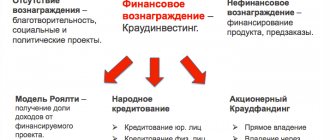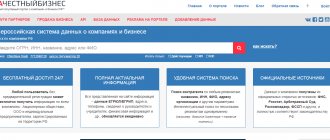Subsidy amount
The amount of financial support from the state depends on the region. For example, compensation payments to cover expenses when registering a business (individual entrepreneur or LLC) average 7–10 thousand rubles.
As for the subsidy directly for starting a business, its size is not determined by regional regulations, but is approved by the federal standard and amounts to 58.8 thousand rubles - the equivalent of 12 times the maximum amount of unemployment benefits. At the same time, a businessman can receive an additional 58 thousand rubles for each hired employee he hires.
These funds will actually later return to the state in the form of taxes and fees:
- 6% of turnover or 15% of profit;
- 19,356 ₽ per year to the Pension Fund (+1% of the amount of income over 300 thousand ₽);
- 3796 ₽ per year to the health insurance fund.
It turns out that with a monthly profit of 20 thousand rubles, the entrepreneur will return the funds to the budget within a year.
How to increase your chances of receiving a subsidy
Socially significant areas of business have priority rights to government assistance. We are talking about household services, the catering sector, the manufacturing industry, agriculture, transport services, etc. But getting money to open a retail outlet will be very problematic.
Also significantly increasing the chances of subsidy approval is an indication that the business involves creating jobs. Moreover, if, after opening your individual entrepreneur or LLC, you hire another unemployed person, then you are entitled to an additional 58,800 rubles.
The project business plan must meet a number of criteria:
- small business must be economically attractive and break even;
- It’s better to indicate in it that you plan to attract several employees (they won’t check this anyway);
- the ratio between your own and borrowed funds should be about 1 to 2 or 1 to 3 (if you indicate that you plan to invest 5,000 rubles from your own funds and receive 58 thousand rubles as a subsidy, then you will probably be refused);
- indicate that it is planned to purchase fixed assets or tangible assets (car, computer, tools, etc.) with government funds; this is better than if you spend it on any services (office rent or advertising).
If subsidies are not provided to entrepreneurs in the region, you can try to participate in various competitions for small businesses and try to get a grant to open one. Innovative projects or socially oriented areas are considered priorities for the state.
What can the subsidy be spent on?
The subsidy can be used to cover certain types of expenses:
- for the purchase of commercial/industrial/office premises;
- for the purchase of equipment;
- to obtain a software license;
- for the acquisition of raw materials or intangible assets.
Money received from the budget must be used according to the prescribed items - a novice businessman will have to report on every ruble spent, attaching supporting documents. If it is discovered that the money was used unlawfully, the violator may be held accountable and the previously issued subsidy will be recovered from him.
Who is entitled to a housing subsidy and how to get it?
The following may apply for state assistance in the construction or purchase of housing:
- young families;
- families raising 3 or more children under 18 years of age;
- low-income families;
- veterans, participants and disabled people of the Second World War;
- close relatives of deceased WWII participants;
- orphans and children without parental care;
- Russians who came from the far north;
- state employees.
They receive a certificate, upon presentation of which a discount is provided when purchasing or participating in the construction of housing. The conditions for receiving housing subsidies for large and young families are as follows:
- Spouses must be no older than 30 years old
- The area of the apartment/house where the family lives should not exceed the norm established in the given region
Officials determine who is entitled to a subsidy using the formula:
Cost of housing = standard price for 1 m2 of living space * area,
which is due to the family, according to established standards.
Families with children receive a 35% subsidy, and families without children a 30% subsidy, based on the amount obtained according to the formula. Also, the calculation will take into account the category of citizens, if this affects the receipt of benefits, as well as correction factors for a specific category (for example, length of civil service, number of children, etc.).
By law, the subsidy is valid for six months. This means that a family that received a certificate in January 2020 must use the funds until June inclusive, otherwise they will need to get on the waiting list again. You can purchase or build any apartment, regardless of its location, at the request of the family. The allocated amount does not change. You can use such a subsidy only according to the purpose, that is, spend it on improving living conditions.
Who can count on a subsidy
A candidate for this type of financial support must meet several criteria:
- age from 18 years;
- Russian citizenship;
- unemployed status, confirmed by the fact that he has been registered with the Employment Center for at least 10 days;
- You will also have to obtain a waiver from each of the employers to whom the person was sent under the job search assistance program from the Central Employment Center.
True, even if all conditions are met, you may not receive a subsidy: funding for the program is limited. The application is more likely to be successful at the beginning of the year, when the allocated funds have not yet been spent. If there is a clear need for support, you can submit an application at the end of the year - in some situations, funds may still be provided. In any case, even if you receive a refusal, you can re-apply in the next period.
However, the subsidy is not available to those receiving an old-age pension, some military personnel, full-time students, or those with a criminal record.
When considering the application of a potential entrepreneur, his business idea plays an important role: the state is primarily interested in financing liquid projects, which at the same time help strengthen important sectors of the economy. For example, starting a business related to the agricultural sector is actively encouraged. And projects from some industries cannot count on government support at all: gambling, pawnshops, production and sale of excisable goods (for example, alcohol), Forex or any other investment activity, issuing loans to the population, insurance.
Microloans for entrepreneurs
As you can see, the size of preferential loans is measured in hundreds of millions and billions of rubles. However, business entities do not always need that kind of money. If we are talking about more modest amounts, it is better to try to get a loan on favorable terms from a microfinance organization.
State support for small businesses for start-ups in 2020 is distributed by state microfinance organizations with the participation of the Entrepreneurship Assistance Fund. Loans from 100 thousand rubles to 5 million rubles are issued for a period of three months to three years at 7.5% per annum. Depending on the loan amount, lenders have the right to require collateral:
- Up to 100 thousand rubles can be obtained without providing collateral or third party guarantees;
- Up to 300 thousand rubles are issued subject to the provision of one type of security - a pledge or surety;
- Up to 600 thousand rubles are provided without collateral if other individuals and the SME Guarantee Fund act as guarantors;
- Up to 1 million rubles can be obtained with the guarantee of the Guarantee Fund to an entity with a good credit history working in a priority industry.
Assistance for individual entrepreneurs from the state in 2020 is issued in non-cash form. To participate in the program, the borrower must meet the definition of a small or medium-sized business, operate for at least six months and earn a stable profit.
What is needed to register with the employment center?
In accordance with Article 3 of Federal Law No. 1032-1, a citizen is considered unemployed if he is recognized as able to work, does not have a regular income, is registered with the Employment Center, is looking for work and is ready to start work (this is confirmed by visiting potential employers in the direction from TsZN).
To obtain unemployed status, you need to visit the Employment Center yourself and provide the following documents:
- passport;
- work book;
- income certificate indicating information for the last 3 months;
- TIN;
- SNILS;
- diploma of education, certificate of completion of training courses or advanced training courses.
Center employees have the right to refuse an applicant if he has not been employed for a long period without sufficient grounds.
What you need to do to get a subsidy
The procedure is as follows:
- Explore the official website of the Employment Center. Not every region provides subsidies for starting a business, so it’s worth checking out the available options in advance. On the official website of the Employment Service, such information is posted in the “Self-employment” section - the conditions and rules for registration are also listed there. And, for example, for the Moscow region you can get information here. If you cannot find the data online, you can call the central control center or send them a request.
- Register as unemployed: if local legislation provides support for start-up entrepreneurs, then the second step involves registration. In addition to the standard set of documents, you need to submit two applications: for unemployment benefits and for your intention to run your own business.
- Get tested. With its help, employment center employees determine the seriousness of intentions and evaluate the applicant’s knowledge. The structure of the test resembles a survey to determine IQ level. However, poor results do not mean a complete loss of the right to a subsidy. In this case, a person can take part in special training courses and after them try to take the test again. Questions in different central centers may differ.
- Create a business plan. This stage is considered one of the most difficult. Plus, the requirements for registration must be met, although there are no uniform rules, and the position of the specific central bank will have to be taken into account. You can clarify the current conditions in any way: in some institutions they issue a manual, in others they conduct an oral consultation, in others they send you to study samples on your own on the Internet.
- Submit documents. You can find out the set of necessary documents directly at the Central Tax Service department or on its website. Here you can request one-time financial assistance for the preparation of documents.
What subsidies does the state provide for individual entrepreneurs?
By subsidy we mean an amount that is given by the state to an entrepreneur free of charge, but for the implementation of certain goals. Both beginning entrepreneurs and those who are already working and developing their business can count on financial assistance.
At the opening
Beginning businessmen who decide to become self-employed and open an individual entrepreneur can receive the following government subsidies in 2020:
- Money to cover expenses associated with legal registration of an individual entrepreneur.
- “Start-up” capital, allowing you to start independent work.
But beginning entrepreneurs should know that in order to receive a subsidy, they will need not only to defend their business plan, but also to confirm the availability of their own funds to open and conduct independent work activities.
For the amount of financial assistance to remain non-refundable, the newborn business must exist for at least a year. Otherwise, the allocated subsidy will have to be returned to the state in full.
For development
Development subsidies include money issued for the following purposes:
- purchase of raw materials necessary for work;
- purchasing equipment necessary for business;
- repair work;
- refund of interest on a loan, if it was taken specifically to open a business in a commercial bank;
- reimbursement of fees under the leasing agreement.
The types of subsidies and requirements for individual entrepreneurs applying for financial state support are determined by the regions independently.
Public funds must be used within the time frame that is agreed upon upon a positive decision to provide a subsidy to individual entrepreneurs. This period may vary in different regions of the country, but on average it is 1-2 years.
Required documents
- passport;
- a business plan drawn up in accordance with the requirements - provided both in paper and electronic form;
- confirmation of successful completion of vocational training courses;
- an application for financial assistance to cover costs associated with collecting documentation and starting a business;
- certificate of bank accounts;
- a certificate from the tax office as confirmation of the absence of debts on mandatory payments.
Important: taking into account the specifics of the business plan and other circumstances, the list can be expanded. For example, if an aspiring entrepreneur is a man, he will need to bring his military ID. If the business is related to serving the population, the individual entrepreneur must provide a medical book (Order of Rospotrebnadzor No. 402 of 2005). Also, the Center has the right to set its own requirements for documents: some can request only diplomas and certificates, while others, in addition, can request certificates of completion of courses.
- Wait for the business plan to be assessed. This is dealt with by a separate commission. If there are shortcomings in the project, the applicant will have to independently defend the plan: create a presentation, present the main points and answer questions. If you can prove the validity of your project, an agreement for financial assistance is concluded.
- Register as an individual entrepreneur or legal entity. To do this, you will need to contact the tax office. Which option to choose depends on the specifics of the business plan and industry.
- Notify the employment center staff about successful registration. An extract from either the Unified State Register of Legal Entities or the Unified State Register of Individual Entrepreneurs is provided. Additionally, you will need to confirm the costs associated with the preparation of documents and the registration procedure.
- Wait for the funds to be transferred. If there are no complaints about the documentary support, payments under the state support program are transferred to the applicant’s bank account.
- Confirm the intended use of funds.
Then all that remains is to undergo an inspection by the commission, which has the right to visit the enterprise six months and a year after receiving the subsidy and assess the current state of affairs. If the inspectors have no complaints, a certificate of compliance with the contractual provisions is drawn up. Otherwise, they may draw up a document about the misuse of funds - then you will have to return the funds received to the budget.
What should be in a business plan
It is difficult to create a competent business plan on your own. But it’s worth tackling the project yourself - this will at least allow you to understand the features of the future business and will definitely be useful when defending the project.
The standard version assumes something like this structure:
- Title page; a summary with the main points of the business idea; a description of the main objectives and goals of the plan, as well as the features of the product or service.
- Market analysis: current situation, competitive opportunities, estimates of consumption of goods and services sold.
- Production plan: you need to describe the organizational features of production - methods for purchasing consumables and equipment, terms of cooperation with suppliers, a scheme for creating jobs.
- Marketing plan: analysis of the target audience, pricing and marketing policy, strategy for attracting customers.
- Organizational plan: hierarchy of employees, regulatory and legislative nuances associated with the planned type of activity. The need for a license and product certification is also clarified here.
- Financial plan - costs and estimated profit. The amount required to open and develop the project is calculated for each article separately. After this, it is described how and what the subsidy will be used for. Finally, the estimated profit, profitability and payback period are indicated.
- Risk analysis. Potential challenges range from legal requirements that limit business operations to natural disasters that could impact yields. Risk management tools are also worth mentioning here.
The final, although not always mandatory, section is the appendices: floor plans, sample agreements, supplier price lists, images of finished products, photographs of the office or workshops.
Business Development Grants
Not only beginning entrepreneurs, but also businessmen conducting active commercial activities can think about how to receive free money from the state for business in 2020. For enterprises operating for less than a year, there is a program for reimbursement of up to 70% of business development costs, and the amount of financing, depending on the region, reaches 250–600 thousand rubles. Its purpose is:
- Purchase of equipment, office equipment and transport (except passenger cars);
- Purchase of tools, household equipment;
- Purchase of raw materials, materials and components;
- Purchase of software;
- Payment for the production of a prototype product and its testing;
- Rental of buildings and premises, land plots, transport and equipment;
- Connecting objects to power transmission networks;
- Payment of a lump sum franchise fee;
- Promoting your own products or services;
- Payment for training courses for employees.
So how to get a grant for small business development in 2020? Budget money is distributed among the winners of a competition held at the beginning of each year by the Committee for Economic Development and Investment Activities. Enterprises that meet the following requirements are eligible to participate:
- The business entity is included in the State Register of SMEs;
- The applicant is ready to pay at least 30% of the project costs;
- The candidate has a business development plan, including the organization of jobs;
- The applicant has no debts on any obligatory payments to the budget;
- The company pays employees salaries on time;
- Employees' wages exceed the subsistence minimum;
- The company is not undergoing liquidation or bankruptcy procedures;
- The applicant has a higher economic or legal education, or has completed training in the basics of entrepreneurship.
Protection of the business plan and execution of the contract
The project is defended before a specially created commission of employees of the employment center, tax office, teachers from training courses and other experts. Usually several candidates speak at once, in order of rotation.
A potential entrepreneur must present his business plan within 10 minutes, covering all the key details. So it’s worth rehearsing your performance in advance in order to optimally distribute time between sections. Members of the commission can ask questions about any aspects of the project - financial schemes, organizational mechanisms, marketing.
You can visually present your products - for example, if you plan to open a confectionery shop, bring baked goods with you.
If the defense is successful, a contract is drawn up. And within 30 days the entrepreneur receives the amount due to him. To avoid having to return this money later, you should carefully study all the terms of the agreement.
Read on the topic: Instructions: how aspiring entrepreneurs can choose a bank for settlements
Confirmation of the intended use of funds
The entrepreneur has 90 days from the date of conclusion of the contract to spend the subsidy and document the expenses. Funds can be directed only to positions presented in the business plan in the appropriate section. The following can be used as confirmation:
- sales receipts;
- money orders;
- contracts with suppliers;
- invoices;
- payment receipts;
- certificates of work performed, etc.
It is better not to delay submitting papers, so that if errors in the form are identified, there is time to correct them.











